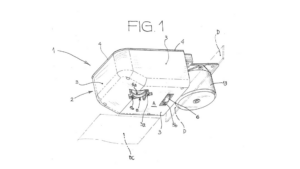In this period when BioCred is entering a pilot phase with our Customers, it's worth spending some time to explain how prototypes' management may look like.
Think about this: you designed something brand new, from the ground up; you took hundreds of R&D decisions for months, you stuck together plastics, optics, belts, electronics, cables, screws, all of them perfectly fitting (on paper!). Unfortunately though, you have never seen the unit physically, so it's just the theory telling you that it will work and will look nice. Of course no manufacturing investments have been made at this stage, but CEOs tend to expect to actually see the device in its final shape, or to be able to give a working model to customers to allow more in-depth evaluation. So, which are the prototypes building steps you shouldn't possibly stumble upon? Let's see.
You have no molds nor plastics parts yet - this investment will come way later. So, you have to go to a plastic prototyper who, using complex technologies, will create parts and covers that almost match your 3D drawings. This is better than nothing, but be aware that those plastics will not have the mechanical behavior you expect from a molded part, nor the exact size and tolerance, so it will tell you something about the final product, but may also hide many important aspects, or even mislead you entirely. About their looks, proto plastics have an odd rat-gray color, so consider you will need to paint the most visible parts if a first impression still matters. It does!
You have no belts, rubbers, motors, sensors since no order for manufacturing has been launched yet. Well, this sounds easy: you are not a startup, so you will reach out to to your usual suppliers and ask for 10-20 of those pieces, right? Nope. They will kindly inform that for such small numbers, you have to rely on local suppliers, and the latter will in turn tell you that the belt is not available with the exact length you want, so you need a specific mold to be designed; or that the motor torque you ask needs to be purposely adapted from another model, which will take two months with a minimum order quantity of 100 pieces or so!
You have no electronics to drive the proto, but you have the schematics project. So you go to PCB designer, who will turn the schematics into a board shape. Then you need to find the electronic components which (again) you can't buy from you usual supplier, because of small quantities. The best way out is to turn to spot-buy market, who for twice (best case) the cost you planned for mass production, will sell you what you need. This was before COVID-19 struck! Today, you can be told that some of the components you desperately need are facing a worldwide shortage (!), and it can take 52 weeks (!) to have few of them, or maybe more.
Of course, you have no final software or firmware ready, except the basic one you needed in R&D to prove the very first concepts. And you know you you can't deliver to final customers a command line shell, where to type obscure commands as engineers do, so you end up building up some sort of user interface which will hopefully turn out acceptable and not too far from a definitive design, in order to minimize delays. The goal is to put together a proto software which can be an early shot of the final development journey, versus an ad hoc code already meant to be discarded and rewritten from scratch.

So now you have all units parts on the table and you are almost done, correct? Not exactly. Don't forget that these are prototypes, so there is no manufacturing line, no assembly instructions, no trained people, no manufacturing tools, no testing procedures. The best option is then to build those units in R&D, means allocation of people, time, and a lot of testing and double-checking to grant to the units a decent behavior when in the Customer's hands. The effort can also help convince designers that building up the units they themselves conceived is an educational exercise...
Ok, now we are done, right? Well, not so fast. The assembled protos need to be delivered through couriers as any standard goods, but needless to say, the appropriate packaging is not available yet. This is unfortunate, because prototypes units are fragile and will suffer poor handling much more than final products. The best way out is to put the prototypes in a box, then put the box in a box, and then package the box of the box in yet another box - like a matrjoska. This unless you want your expensive protos to fall apart due to poor packaging - not exactly the impression you wanted to give your best Customers, right?
Hope this picturesque journey helps shed some light on the real process. In reality, most of the described behaviors are encoded in the design team's DNA, and will flow naturally without hiccups; but it still may make sense to put the spotlight on what extra-manufacturing building really means!
Pierpaolo Bubbio
R&D Director, Panini





